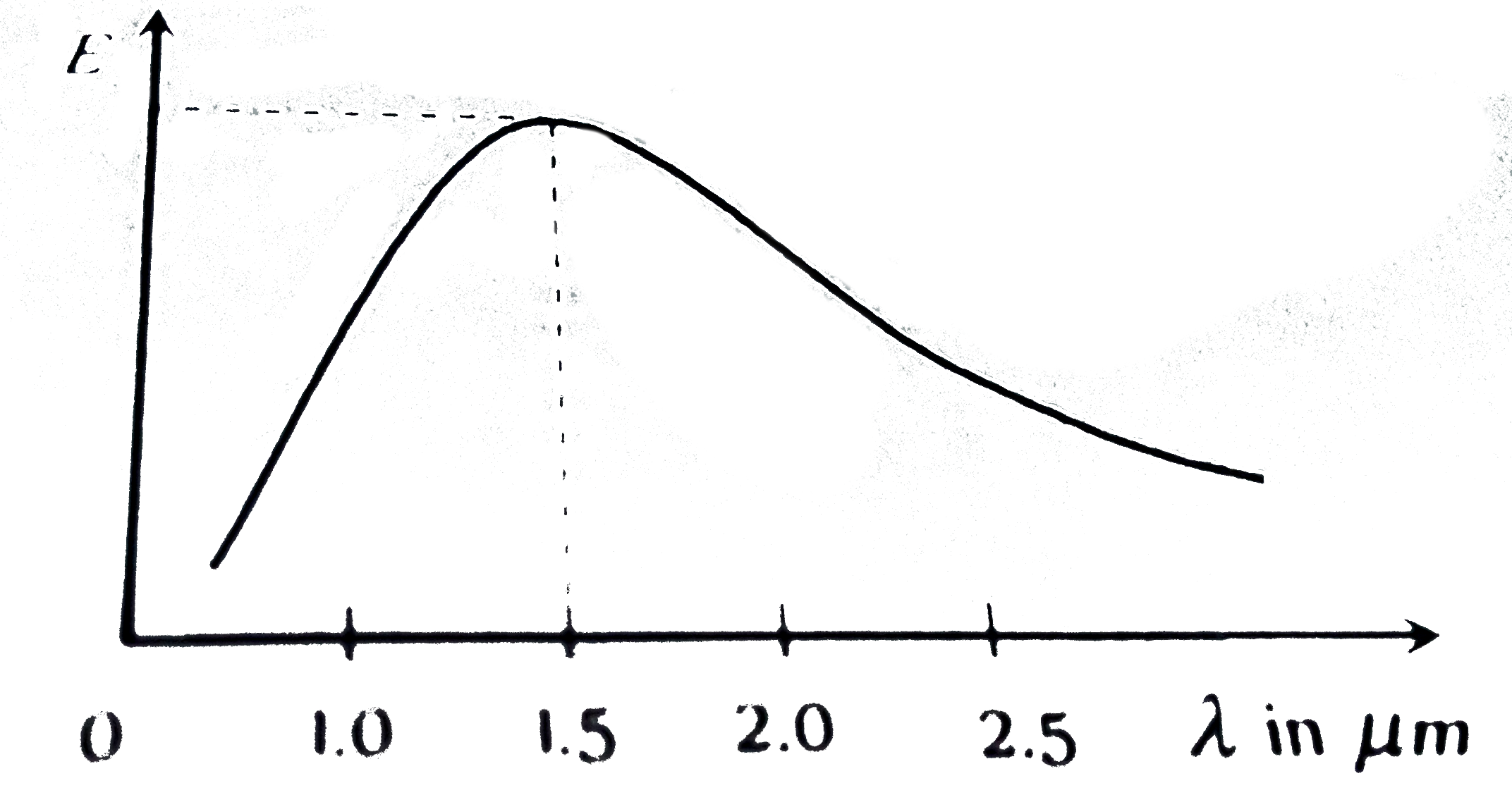A spherical body of area A and emissivity e=0.6 is kept inside a perfectly black body. Total heat radiated by the body at temperature T
0.4σAT4
0.8σAT4
0.6σAT4
1.0σAT4
The correct Answer is:C
To find the total heat radiated by a spherical body of area A and emissivity e=0.6 kept inside a perfectly black body at temperature T, we can use the Stefan-Boltzmann law. Here’s a step-by-step solution:
Step 1: Understand the Stefan-Boltzmann Law
The Stefan-Boltzmann law states that the power radiated per unit area of a black body is directly proportional to the fourth power of its absolute temperature. The formula is given by:
P=σAT4
where:
- P is the power (total heat radiated per unit time),
- σ is the Stefan-Boltzmann constant,
- A is the area,
- T is the absolute temperature.
Step 2: Modify the Law for Non-Black Bodies
For a body that is not a perfect black body (like our spherical body with emissivity e), the formula is modified to:
P=eσAT4
where e is the emissivity of the body.
Step 3: Substitute the Given Values
In this case, the emissivity e is given as 0.6. Thus, we can substitute this value into the modified Stefan-Boltzmann law:
P=0.6σAT4
Step 4: Conclusion
The total heat radiated by the spherical body at temperature T is:
P=0.6σAT4
This is the final expression for the total heat radiated by the body.
The Stefan-Boltzmann law states that the power radiated per unit area of a black body is directly proportional to the fourth power of its absolute temperature. The formula is given by:
P=σAT4
where:
- P is the power (total heat radiated per unit time),
- σ is the Stefan-Boltzmann constant,
- A is the area,
- T is the absolute temperature.
For a body that is not a perfect black body (like our spherical body with emissivity e), the formula is modified to:
P=eσAT4
where e is the emissivity of the body.
In this case, the emissivity e is given as 0.6. Thus, we can substitute this value into the modified Stefan-Boltzmann law:
P=0.6σAT4
The total heat radiated by the spherical body at temperature T is:
P=0.6σAT4
Topper's Solved these Questions
- PROPERTIES OF MATTERBOOK - VMC MODULES ENGLISHCHAPTER - PROPERTIES OF MATTEREXERCISE - JEE Advanced (Archive) Level - 2 (MULTIPLE OPTIONS CORRECT TYPE)
19 Videos
- PROPERTIES OF MATTERBOOK - VMC MODULES ENGLISHCHAPTER - PROPERTIES OF MATTEREXERCISE - JEE Advanced (Archive) Level - 2 (NUMBERICAL VALUE TYPE)
7 Videos
- PROPERTIES OF MATTERBOOK - VMC MODULES ENGLISHCHAPTER - PROPERTIES OF MATTEREXERCISE - JEE Advanced(Archive) Level - 2
1 Video
- MOVING CHARGES & MAGNETISM BOOK - VMC MODULES ENGLISHCHAPTER - MOVING CHARGES & MAGNETISM EXERCISE - IN-CHAPTER EXERCISE-K
10 Videos
- QUIZBOOK - VMC MODULES ENGLISHCHAPTER - QUIZEXERCISE - PHYSICS
30 Videos
Similar Questions
For perfectly black body emissivity (e) is
View SolutionOn heating a body, its temperature.........
View SolutionThe reflectance and emittance of a perfectly black body are respectively
View SolutionDoes a body at 0∘C radiate any heat ?
View SolutionThe rate of dissipation of heat by a black body at temperature T is Q. What will be the the rate of dissipation of heat by another body at temperature 2T and emissivity 0.25?
View SolutionAssume that the total surface area of a human body is 1.6m2 and that it radiates like an ideal radiator. Calculate the amount of energy radiates per second by the body if the body temperature is 37∘C . Stefan constant σ is 6.0×10−8Wm−2K−4 .
View Solution''Lamp black and platinum black are used as perfect black body one for absorption of heat radiation.'' Why ?
View Solution(a) Describe the principle of (i) a thermopile and (ii) a bolometer and show how these devices are used.
(b) Define the term black body. What is meant by black body radiation ? As the temeprature of a black body rises, what changes take place in (i) the total energy radiated from it and (ii) the energy distribution amongst the wavelengths radiated ?
View SolutionIn the figure, the distribution of energy density of the radiation emitted by a black body at a given temperature is shown. The possible temperature of the black body is

View SolutionIs it neccesary that all black coloured bodies to be regarded as perfectly black bodies ?
View Solution

